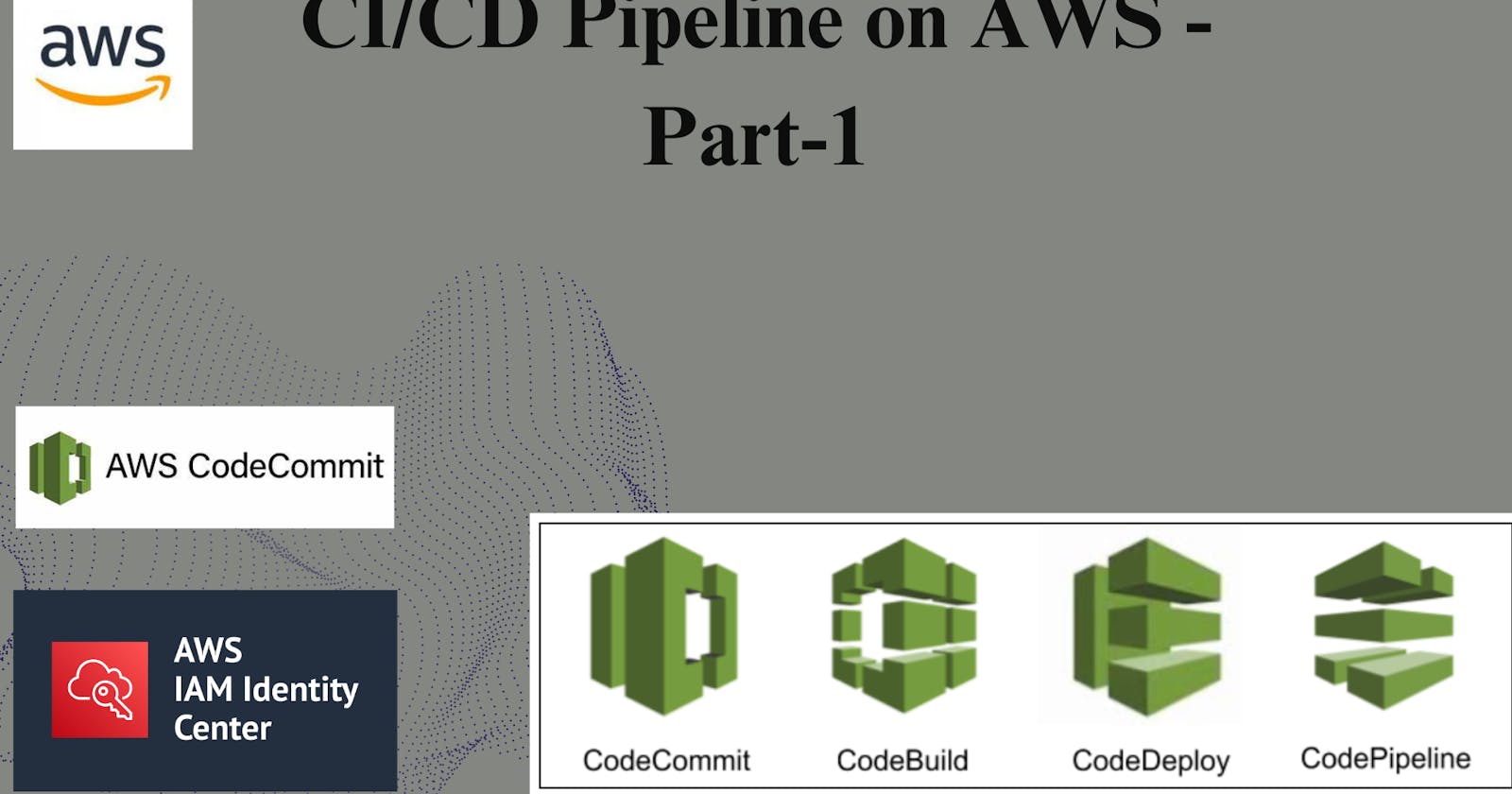What is CodeCommit ?
AWS CodeCommit is a fully managed source control service provided by Amazon Web Services (AWS). It allows developers to securely store and manage their source code in the cloud. CodeCommit supports Git, which is a widely used version control system known for its flexibility, distributed nature, and robust branching capabilities.
Importance of AWS CodeCommit for AWS Engineers
For AWS engineers, CodeCommit serves as a foundational tool in the software development lifecycle. Here's why it's crucial:
Centralized Code Repository: CodeCommit provides a centralized location for storing code, making it accessible to all team members regardless of their physical location. This promotes collaboration and ensures that everyone is working with the latest version of the codebase.
Security and Compliance: AWS CodeCommit offers robust security features such as encryption, access control, and multi-factor authentication. This ensures that sensitive code remains protected and compliant with industry regulations and organizational policies.
Integration with AWS Services: As part of the AWS ecosystem, CodeCommit seamlessly integrates with other AWS services such as AWS CodeBuild, AWS CodeDeploy, and AWS CodePipeline. This allows engineers to automate various stages of the software delivery process, from building and testing to deployment and monitoring.
Scalability and Performance: CodeCommit is designed to scale effortlessly, accommodating growing codebases and team sizes without compromising performance. AWS handles the underlying infrastructure, ensuring high availability and low latency access to code repositories.
Version Control and History: Git, the underlying version control system used by CodeCommit, enables engineers to track changes to the codebase over time. This includes who made the changes, when they were made, and why they were made. This version history is invaluable for troubleshooting, auditing, and reverting changes if necessary.
Branching and Merging: Git's branching and merging capabilities allow engineers to work on multiple features or fixes simultaneously without impacting each other's work. CodeCommit makes it easy to create, manage, and merge branches, facilitating parallel development efforts and enabling faster time-to-market.
Real-Time Example:
Imagine a team of AWS engineers working on a web application hosted on AWS infrastructure. Here's how they leverage AWS CodeCommit in their daily workflow:
1. Project Setup: The team creates a new repository in AWS CodeCommit to host the source code of their web application. They initialize the repository with the project's initial codebase, including HTML, CSS, and JavaScript files.
2. Collaborative Development: Each engineer clones the CodeCommit repository to their local development environment using Git. They work on different features or bug fixes independently, creating separate branches for each task.
3. Version Control: As engineers make changes to the code, they commit their work to their respective branches with descriptive commit messages. Git tracks these changes, providing a detailed history of who made each change and when.
4. Code Reviews: Before merging their branches into the main codebase, engineers create pull requests in CodeCommit, allowing their peers to review the proposed changes. They discuss the code, suggest improvements, and ensure adherence to coding standards and best practices.
5. Continuous Integration and Deployment: Upon approval, the changes are merged into the main branch. AWS CodePipeline, a continuous integration and delivery service, detects the changes in the CodeCommit repository and triggers automated build and test processes using AWS CodeBuild.
6. Deployment to AWS Infrastructure: Once the build and tests pass successfully, AWS CodeDeploy deploys the updated application to the AWS infrastructure, ensuring seamless delivery to end-users. Engineers monitor the deployment process and address any issues that may arise.
7. Monitoring and Maintenance: Post-deployment, engineers use AWS CloudWatch to monitor the application's performance and health metrics. They can quickly roll back to previous versions of the code stored in CodeCommit if they encounter any critical issues, ensuring minimal downtime.
Conclusion:
In this scenario, AWS CodeCommit serves as the backbone of the team's software development workflow, enabling collaborative development, version control, automated testing, and seamless deployment to AWS infrastructure. By leveraging CodeCommit and other AWS services, the team delivers high-quality software faster and more efficiently, ultimately enhancing the end-user experience.
Set up a code repository on CodeCommit and clone it on your local.
First we need to open to AWS Code Commit and Create repository.


No need to change anything, Just click to create button. After that go IAM And Create a user and provide the permissions.

After that go to USER, go Security credentials and go to HTTPS Git credentials for AWS CodeCommit, Gereate the credentials. How to creeate a user you can check my IAM Blog (Click here).

After that we need to Visual studio code and open the folder and create a file
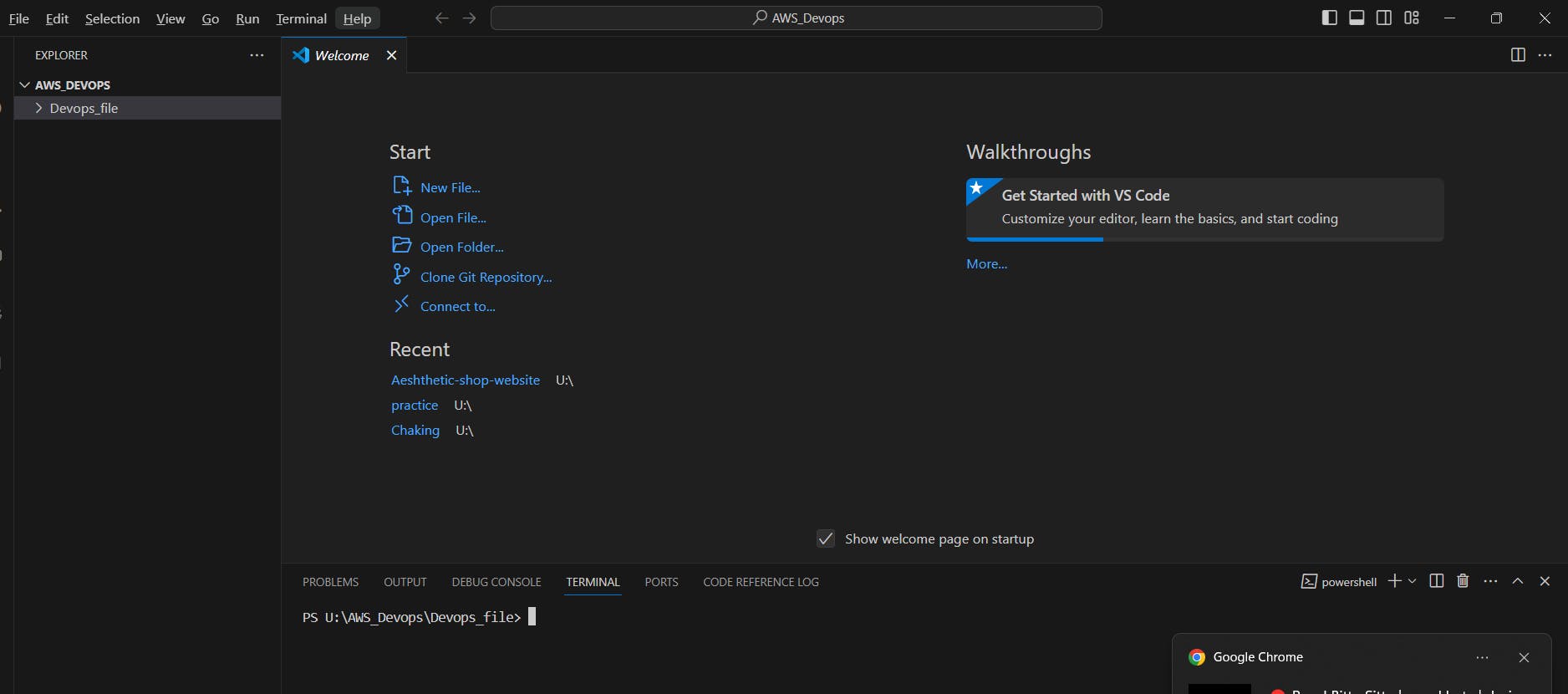
Now we need to one in integrated terminal

Now we need to go to code commit and clone the https,Click to clone url, After that Click to **clone https.**Now we have recevied clone url copy this url and paste to visual studio code.when you paste this url it need to **HTTPS Git credentials for AWS CodeCommit.**Provide that credentials.

Now clone is done, First we need to init all and check which branch we have.
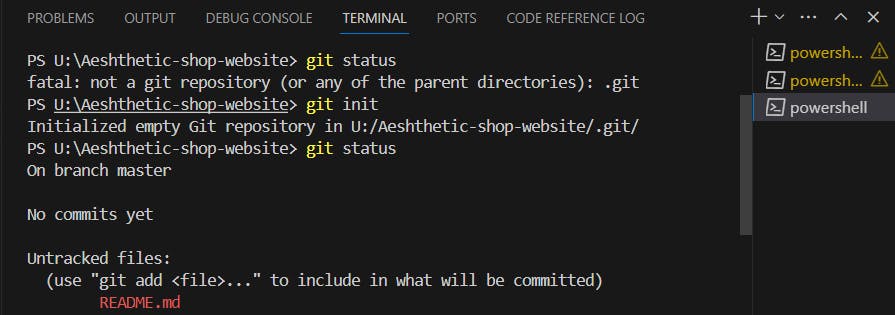
So we have master branch so we need run add command because index.html file is blongs to working directoy need to push staging area.
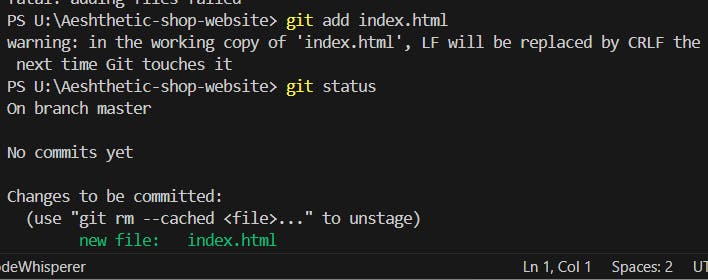
Now we need to commit and provide some message.

now we need to push this file to code commit.
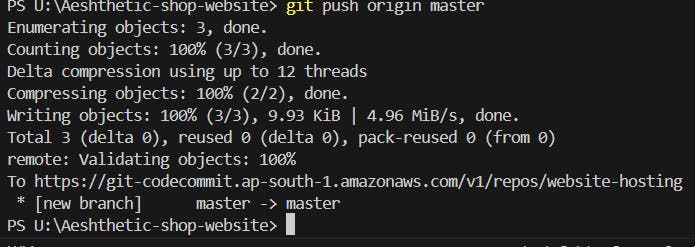
Now push command is done, go to the code commit and refresh the service. we have index. html file

now go the branch check which branch we have.

